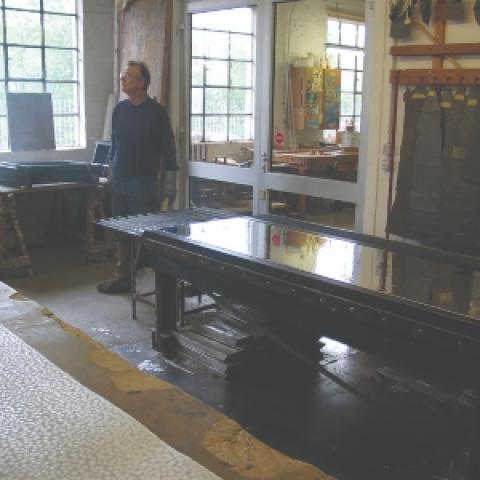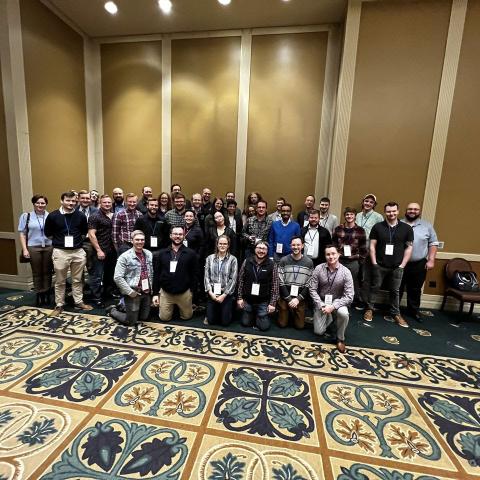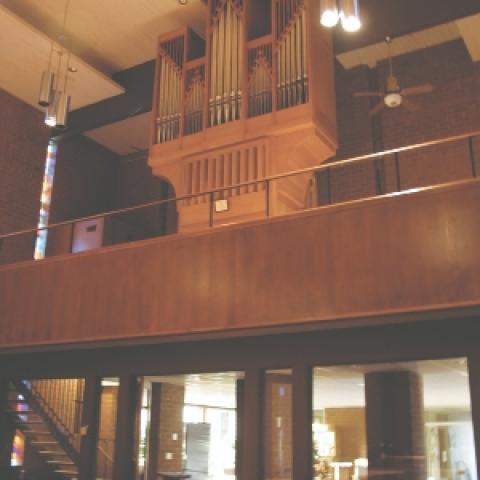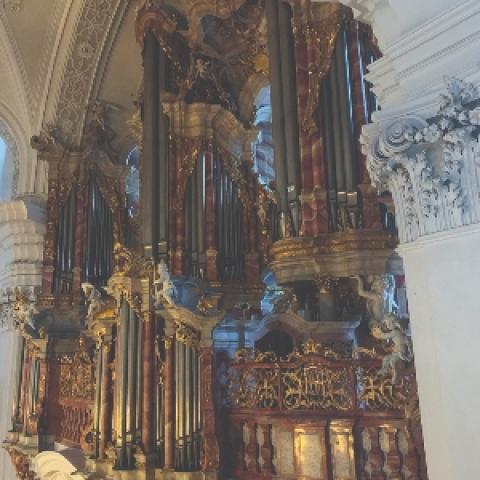Humble π
Archimedes (c. 287–c. 212 BC) lived in the ancient Greek capital of Syracuse, located on what is now Sicily. He was one of the great mathematicians, engineers, inventors, and astronomers of his time, even of all time. He imagined and recorded the origins of calculus and pioneered the concept of applying mathematics to physical motion, the applications of a screw, and the multiplication of pulleys and levers to allow the lifting of heavy objects. He is the source of the quote, “Give me a lever long enough and a place to stand, and I can move the earth.”
Among his many achievements was the realization of π (spelled pi), the mathematical constant that defines the properties of a circle and all shapes that are related to circles. ∏ is an irrational number—it cannot be expressed as an exact number. We round it off at 22/7 or 3.14, so we actually arrive at approximations of the exact number. It is a little like figuring a third of a dollar: $0.33 + $0.33 + $0.34 = $1.00. Because it cannot be expressed in an exact way, we use the symbol π to indicate the exact number. Around 600 AD, Chinese mathematicians calculated π to seven digits after the decimal, and with modern computing power it has been calculated to trillions of digits. It is infinite. Let’s stick with 3.14 to save time. ∏ is known as Archimedes’ Constant.
RELATED: Read "The Life of Pi" here
In the June 2021 issue of The Diapason, pages 12–13, I wrote about an encounter I had with a twenty-something kid in a local lumber yard as I was buying material to make a circular baffle to keep squirrels off one of our birdfeeders. I was planning to fasten aluminum flashing to the circumference of the circle, so I rattled off thirty inches (the diameter of my circle) times π to get a little under eight feet, so the ten-foot roll of flashing would be enough. The kid did not know about π (didn’t know about π?) so I gave him a primer. ∏ times the diameter of a circle (πd) is its circumference. ∏ times the radius squared (πr2) is its area. I suggested that we could compare the area of a twelve-inch pizza with that of a sixteen-inch pizza, and using the calculator in my phone, I rattled off the two areas, and he was impressed by how much difference that four inches made to the size of the pizza.
But when I recreated the exercise while writing the June column, I mixed up the formulas and used πd for the area rather than πr2 (circumference rather than area) and triumphantly reported the difference between a twelve- and a sixteen-inch pie as about twelve and a half square inches. Had I used the correct formula, I would have found that the sixteen-inch pie is larger by about 88 square inches, or 44 two-inch bites, over six times more than my published result.
Two readers caught my mistake and wrote to me and to the editors of The Diapason. Nicholas Bullat is a retired organist and harpsichordist and former chair of the organ department and head of graduate studies at Chicago’s American Conservatory who also worked as a corporate and securities counsel. Nicholas carried the pizza story a step further using prices from a local pizzeria. Their $12.50 twelve-inch pie costs about $0.11 per square inch while the $18.00 sixteen-inch pie comes out at $0.09 per square inch. If I am right estimating a bite at two square inches, then those 44 extra $0.18 bites seem quite a bargain.
Glenn Gabanski, a retired high school math teacher in the Chicago area, also caught my mix up of pizza recipes, adding that the sixteen-inch pizza is 1.78 times larger than the twelve-inch. I will never buy a small pizza again. If the large one does not get finished, we will have leftovers for breakfast.
Achimedes’ mental model
Glenn found another significant error in what I wrote for the June 2021 issue. Remembering long-ago visits to Boston’s Museum of Science, I wrote:
When I was a kid on school field trips, I was interested in an exhibit at the Museum of Science in Boston that showed a perfect sphere and a perfect cone on a scale. Each shape had the same radius, and radius and height were equal. They balanced. My old-guy memory of my young-guy thinking had me wondering, “Who figured that out.” You can prove it by using π to calculate the volume of each shape.
The last time I was in that wonderful museum would actually have been when my sons were teenagers, more than twenty years ago, and I have since learned that the exhibit was installed around 1980, long after my field-trip days. I should hesitate to guess because I am apparently often wrong. Glenn pointed out that my memory of the cone and sphere could not be correct because the cone would have to be four times the radius of the sphere for the masses to be equal when the radii were equal. The volume of a sphere is V = 4/3 πr3. If r = 1, V = 4/3 π. The volume of a cone is V = πr2h/3. If r = 1, then V = π/3, ¼ the volume of the sphere. Using 1 for the radius made it easy to understand.
My foggy senior-citizen memory needed a boost, so I called the Museum of Science and was connected to Alana Parkes, an exhibit developer. When I described the volume-balancing exhibit she knew exactly what I meant and responded with a photograph reproduced here showing the balance beam with a cone and sphere on one side, and a cylinder on the other. If the radius of the sphere and the radii of the base of the cone and the cylinder are all equal, the volume of the cone plus the sphere equals that of the cylinder. I shared that with Glenn, and he whipped out his pencil and responded with a sketch, also reproduced here, a lovely piece of teaching with the reduction of the equations explaining the properties of the drawing. I am sorry the fellow in the lumber yard did not have Glenn as a teacher in high school.
I had engaging conversations with Nicholas and Glenn on Zoom, and I am grateful to them for reading carefully enough to catch my errors and respond. When I told Glenn that he was one of two who had written, he responded, “Only two?” And many thanks to Alana Parkes of the Museum of Science in Boston for her cheerful willingness to correct my faulty memory and provide this fine photograph.
Glenn mentioned that he had always been troubled by the moment at the end of The Wizard of Oz, when the Wizard confers a “ThD” degree on the Scarecrow, a Doctor of Thinkology, he explains. The Scarecrow instantly responds by misquoting the Pythagorean theorem. Humbug. (You can watch that scene here: https://www.youtube.com/watch?v=DxrlcLktcxU.) And remember that bird feeder baffle? The thirty-inch plywood circle with less than eight feet of flashing around it? It didn’t work. The squirrels “took the hill” within an hour.
A life’s work: remembering Fritz Noack
Forty hours a week times fifty weeks is 2,000 hours in a year. Maybe you took three weeks of vacation, but I bet you worked more than eight hours a lot of those days. At that rate, there are 100,000 working hours in a fifty-year career. Did you use them all wisely and productively? Professional accomplishments add up over a long career. I started writing this column in April of 2004 so this is the 208th issue at an average of 2,500 words, well over half a million words. When you visit, I will show you my pitchfork, um, I mean tuning fork. In twenty years, a church organist playing one service a week for fifty weeks each year plays at least 3,000 hymns, 1,000 preludes, 1,000 postludes, 1,000 anthems, and 1,000 dramatic lead-ups to the Doxology. Did you do that without repeats? Oh, right, you played a certain “Toccata” on twenty Easters.
If your life’s work was a billion bits on a hard drive or 250,000 emails, you cannot stand them in a field and review them, but when you walk into the workshop of the Noack Organ Company you see photos of 160 pipe organs on the wall leading up the stairs to the office. Fritz Noack founded the company in 1960 in Lawrence, Massachusetts, moved it to a larger workshop in Andover, Massachusetts, in 1965, and in 1970 purchased an old school building on Main Street in Georgetown, Massachusetts. A tall erecting room with a voicing balcony was added, and the Noack team has been producing marvelous organs there for over fifty years.
Fritz Noack passed away on June 2 at the age of 86. He leaves a vast legacy that stretches from the infancy of the “Tracker Revival,” the renaissance of American organ building, to the present day. He apprenticed with Rudolf von Beckerath, and worked for Klaus Becker, Ahrend & Brunzema, and Charles Fisk (at the Andover Organ Company) before starting his own firm.1 The nascent company was home to a host of apprentices who have had important and influential careers in the business including John Brombaugh and John Boody.
An American renaissance
As a teenager in the Boston area in the 1970s, I was swept up in the excitement of that renaissance. My mentors took me to concerts, workshop open houses, and parties, and I soaked it all in. I remember a moment in the Würsthaus in Harvard Square, a long gone but much-beloved haunt for the organ community. We had come from a recital played by Fenner Douglass on the Fisk organ at Harvard Memorial Church and were gathered around a large round table. It must have been around 1973 or 1974, because I was thinking about applying to Oberlin and was excited to meet Fenner for the first time. Someone at the table noticed that there were nine people present who were organists for churches that had Fisk organs. The guest list would have included John Ferris, Yuko Hayashi, John Skelton, and Daniel Pinkham. (If anyone reading was there that night, please be in touch and fill in my erstwhile memory.) That has stood out for me as an indication of just how much was going on in the organ world there and then. C. B. Fisk, Inc., was founded in 1961, and barely a dozen years later there were nine Fisk organs in the Boston area alone.
There is quite a list of adventurous instrument builders who opened workshops in the 1960s and jump-started that renaissance, including Fisk and Noack, Karl Wilhelm, Hellmuth Wolff, and John Brombaugh. Fritz Noack’s career was the longest of all these. It is hard to think of any field of endeavor that was affected by a renaissance as profound as the pipe organ. Comparing the organs built by these firms in the 1960s with those built at the same time by the long established companies like Möller, Reuter, and Aeolian-Skinner is like comparing chalk with cheese. The combination of research and imagination that went into that was dazzling. People were traveling to Europe to study ancient instruments supported by Fulbright scholarships and Ford Foundation grants and experimenting with their findings after returning to their workshops.
During the 1980s and 1990s, I maintained over a hundred organs in New England, and I was familiar with many of the earliest organs of that renaissance. Some of them could truly be described as experimental organs, prototypes that combined newly formed interpretations of ancient techniques with the practicality of creating a complex machine with an experimental budget, and some could be honestly described as not very good. There was a lot of plywood, contrasting with the opulent hardwood European cases. There were primitive electric stop actions using automotive windshield-wiper motors to move the sliders. The noise of those motors was a noticeable part of the experience of hearing the Fisk organ at Harvard.
A common flaw of organs of that time was “wind-sickness.” American builders were not used to working with low wind pressures, and there was much to do to develop the ability to deliver sufficient volume of air pressure to larger bass pipes. Lifting a pipe of a 32′ rank in a Skinner organ and playing the note will blow off your topknot. Visiting the famous five-manual Beckerath organ at the Oratory of Saint Joseph in Montreal while Juget-Sinclair was renovating it, I was struck by the two-inch paper tubing used to supply wind to the massive 32′ façade pipes. That one-inch radius squared times π equals 3.14 square inches. The largest Skinner toehole is at least five inches in diameter. The two-and-a-half-inch radius squared times π is 19.625 square inches. I will take the large pizza, thanks.
In a nutshell
The Andover Organ Company and Otto Hoffman of Texas were among the earliest American builders of modern tracker-action organs. Hoffman was building organs in the late 1940s, but the activity centered around Boston was the biggest concentration of the start of the renaissance. Four significant Beckerath organs were installed in Montreal in the 1950s including the five-manual behemoth at the Oratory. That inspired the leadership of Casavant to quickly branch out into mechanical-action instruments to establish a foothold in their own country.
In 1964, Casavant installed a three-manual tracker organ with forty-six ranks (many of them 2′ and smaller) at Saint Andrew’s Episcopal Church in Wellesley, Massachusetts, Opus 2791, and Karl Wilhelm and Hellmuth Wolff were among the Casavant employees present. Shortly thereafter, both established their own firms. (That organ has subsequently been moved through the Organ Clearing House to Holyoke, Massachusetts, and replaced with a new two-manual instrument by Juget-Sinclair.) That same year, Fisk built the thirty-eight-stop organ (Opus 44) for King’s Chapel in Boston where Daniel Pinkham was the organist, the first modern American three-manual tracker organ. The first modern American four-manual tracker was built by Fisk in 1967 for Harvard, Fisk’s forty-sixth organ in the company’s first eight years.
Fritz Noack’s first large organ was the three-manual instrument for Trinity Lutheran Church in Worcester, Massachusetts, built in 1969, the fortieth Noack organ in the company’s first nine years. Those two small workshops produced close to a hundred organs in a decade. By 1980 when both firms were twenty years old, they had produced a combined 170 organs including the ninety-seven-rank Fisk at House of Hope Presbyterian Church in Saint Paul, Minnesota. That’s what I mean when I mention the tremendous amount of activity in Boston in the 1960s and 1970s.
Today, sixty years into the renaissance, we have a raft of firms to choose from, many of which are led by people who started in the Noack shop. It is fun to trace the genealogy of the American pipe organ business to understand how the histories of the companies intertwine.
I know others will write Fritz Noack’s biography, telling of his personal history and family. I am happy to point out the significance of his diligence and imagination, the extraordinary number of excellent instruments he produced in a workshop that I am guessing never had more than twelve people working at a time, and how I valued him as a friend and mentor as I made my way through life. I maintained perhaps ten of his organs, including the big one in Worcester (there was a swell Mexican restaurant nearby), and we had lots of close encounters when problems arose that we solved together.
He had a positive outlook, charming smile, and a twinkle in his eye. He carried the wisdom of the ages, always remained an avid learner, and helped raise the art of organ building in America for all of us. He gave the art a further great gift, ensuring his company’s future by bringing Didier Grassin into the firm to continue its work. With Fritz’s support and encouragement, Didier has added his style of design and leadership and has produced two monumental organs in his first years after Fritz’s retirement, Opus 162 in Washington, D.C., and Opus 164 in Birmingham, Alabama.
I salute Fritz Noack for all he has added to the lives of organists around the world. I am grateful for his friendship and wish him Godspeed as he assumes his new job, tuning harps in the great beyond.
Notes







